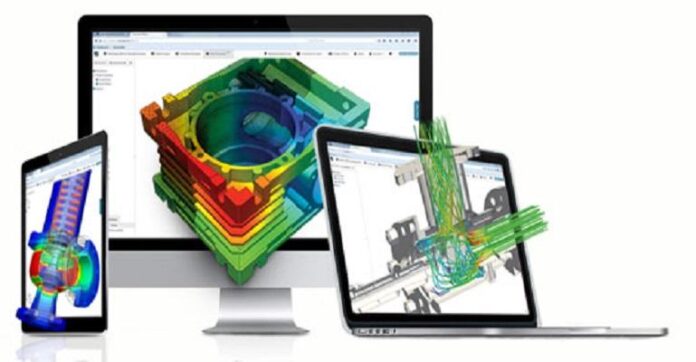For all the promise of digital transformation, some manufacturers run into a buzzsaw of resistance when it comes to digital change.
Even as industries as diverse and supposedly staid as banking, journalism, and legal have been touched by digital transformation, manufacturing remains a tough nut to crack.
Even as industries as diverse and supposedly staid as banking, journalism, and legal have been touched by digital transformation, manufacturing remains a tough nut to crack.
The question is: Why? What’s getting in the way?
For all the promise that digital transformation holds to help manufacturing reach new levels of automation and efficiency, there are still deeply “analog” aspects to the manufacturing world. This means that digital transformation efforts – and the solutions that are deployed to speed these efforts along – can quickly run into a buzzsaw inside the organizations that stand to benefit from what they have to offer.
For software vendors, this requires looking at manufacturing organizations through the proper lens and realizing that making a transformational change means accounting for the way that these organizations actually operate – which often means accommodating a mixture of digital and analog processes and focusing on problems both large and small.
The Persistence of Paper
If digital transformation is a recipe, then two of the crucial ingredients that make this recipe work in the manufacturing world are model-based definition (MBD) and product manufacturing information (PMI).
Essentially, these ingredients are a way to serve up all the information about a part or component and how to properly manufacture it in a convenient digital format (i.e., a digital CAD model). The model can then be effortlessly shared both within the organization and externally with partners throughout all aspects of the manufacturing lifecycle.
So far, so good. But how many manufacturing companies actually have this kind of digital data and are sharing it across teams?
Not many: Estimates are that only a fraction of organizations utilize MBD, with the vast majority falling back on paper printouts for access to PMI like the geometric dimensions & tolerances (GD&T), the bill of materials (BOM), material specifications, and other important pieces of information. As a result, it’s not uncommon to see teams using a 2D printout and a highlighter on the shop floor during the actual manufacturing of an item or afterward during an inspection.
With this kind of paper-entrenched setting, it becomes difficult for manufacturing to inch closer to the Industry 4.0 paragon of “lights out manufacturing”, where multiple aspects of the manufacturing process are streamlined and automated. Nor can they easily embrace the potential of the Internet of Things (IoT) and digital twins, where a virtual model can accurately reflect the condition of a real-world physical asset.
Solutions that tackle these areas do exist and deliver significant value once put into place – but they require the right setting to make an impact, and that tends to be the manufacturing facilities that have weened themselves off of a reliance on paper.
State of the Art Transformation
Transformative new solutions aren’t plopped down into a vacuum – and on both the software and hardware front, barriers to success can arise.
For example, what does the manufacturer’s ERP system, MRP system, or PLM system look like? What about their suite of design tools? How old are they, and how well do they “play nice” with other systems and new technology?
If manufacturers have accumulated layers of heterogeneous but disconnected software, it can hold them back from implementing new state-of-the-art solutions that can take advantage of MBD and help them take a leap forward in their capabilities.
Meanwhile, sometimes the hardware itself is the thing that gums up the gears. Precision manufacturing relies on a score of computer numerical control (CNC) machines – from drills and presses to lathes and grinders – to produce finished parts and components. But what if the machine isn’t sophisticated enough to run the software that can interpret the PMI within a model?
The good news here is that while outdated software or hardware might provide a barrier today, the power of MBD-driven digital transformation can steadily be unlocked as ongoing technology refresh cycles occur.
Try Thinking Small
Another potential barrier to digital transformation in the manufacturing space can be traced to the solutions providers themselves, who are sometimes focusing their attention on the wrong areas.
The fact is, solving seemingly “small” manufacturing problems can actually be hugely valuable. For example, most manufacturers don’t have an easy way to represent aftermarkets parts in a digital format that draws upon the original CAD data; instead, they rely on paper catalogs that need to be flipped through if someone needs a spare part for a crucial piece of machinery.
While this might not seem like the “sexiest” problem to solve – creating a digital 3D parts catalog and digital work instructions for those parts – it actually represents a tremendously profitable opportunity for manufacturers and a huge step-up in efficiency from current processes around aftermarket parts.
It’s just this kind of “small” niche application that represents a fruitful path for transformation. After all, change has to start somewhere – and if you add up enough little changes, you eventually get big change.
Slowly but Surely
Does the manufacturing space have hurdles that make digital transformation a difficult proposition? Absolutely. Does that mean that these hurdles are insurmountable? Absolutely not.
To be sure, there are pitfalls that lurk in the manufacturing space, whether it’s cultural barriers like “We’ve always used paper – that’s how we do things,” technological barriers that make it hard to take advantage of MBD, or even an unwillingness to shoot for anything less than the moon on the part of vendors.
But as long as engineering software vendors continue to develop solutions that can effectively work with CAD data and support a shift towards MBD, they’ll be moving the needle in the right direction, bringing digital transformation slowly – but surely – into the manufacturing space.
Ron Fritz is co-founder and CEO of Tech Soft 3D – a global technology firm headquartered in Bend, Ore. In his 23+ years since co-founding Tech Soft 3D, Ron has grown Tech Soft 3D from a small, self-funded and scrappy start-up into a trusted industry leader by “building a great team, establishing a strong culture and keeping everyone focused on the company’s vision and mission.”



